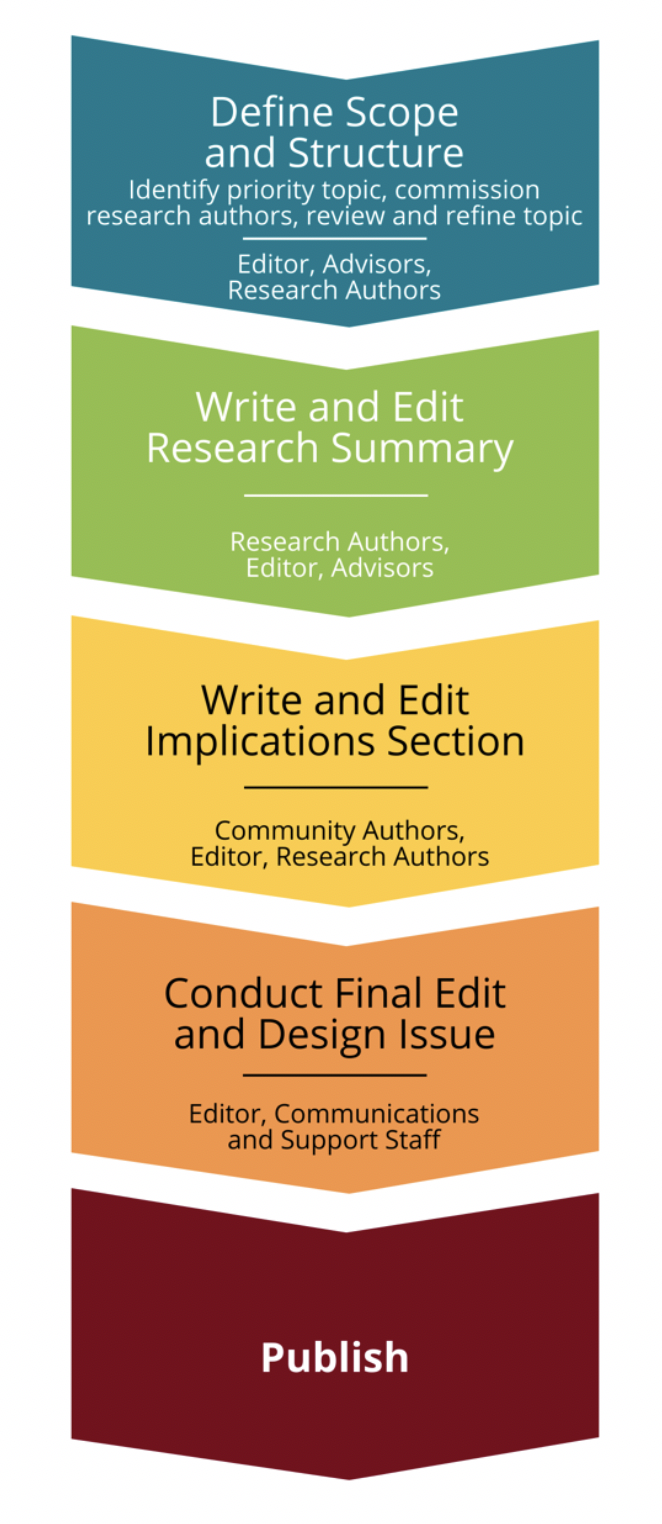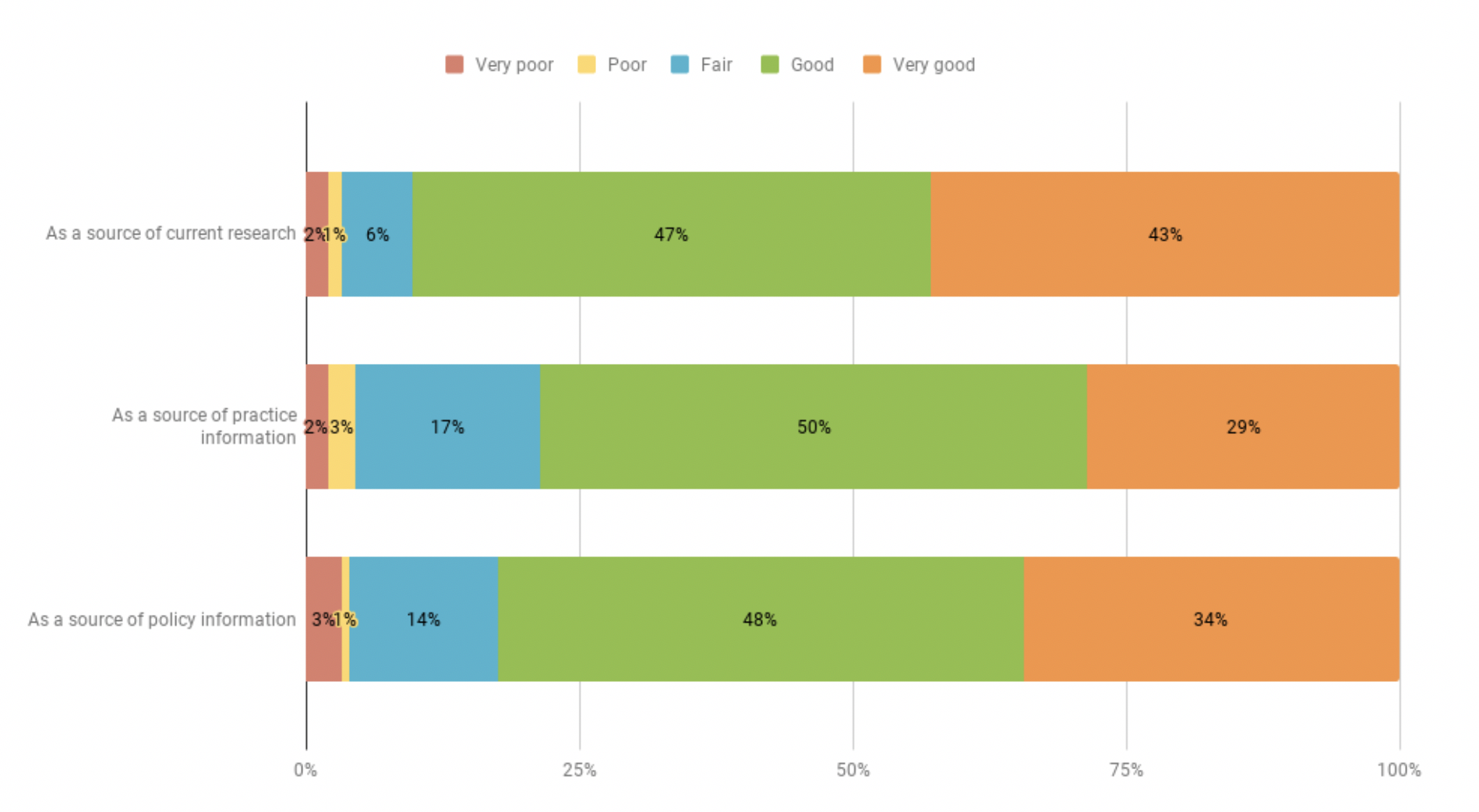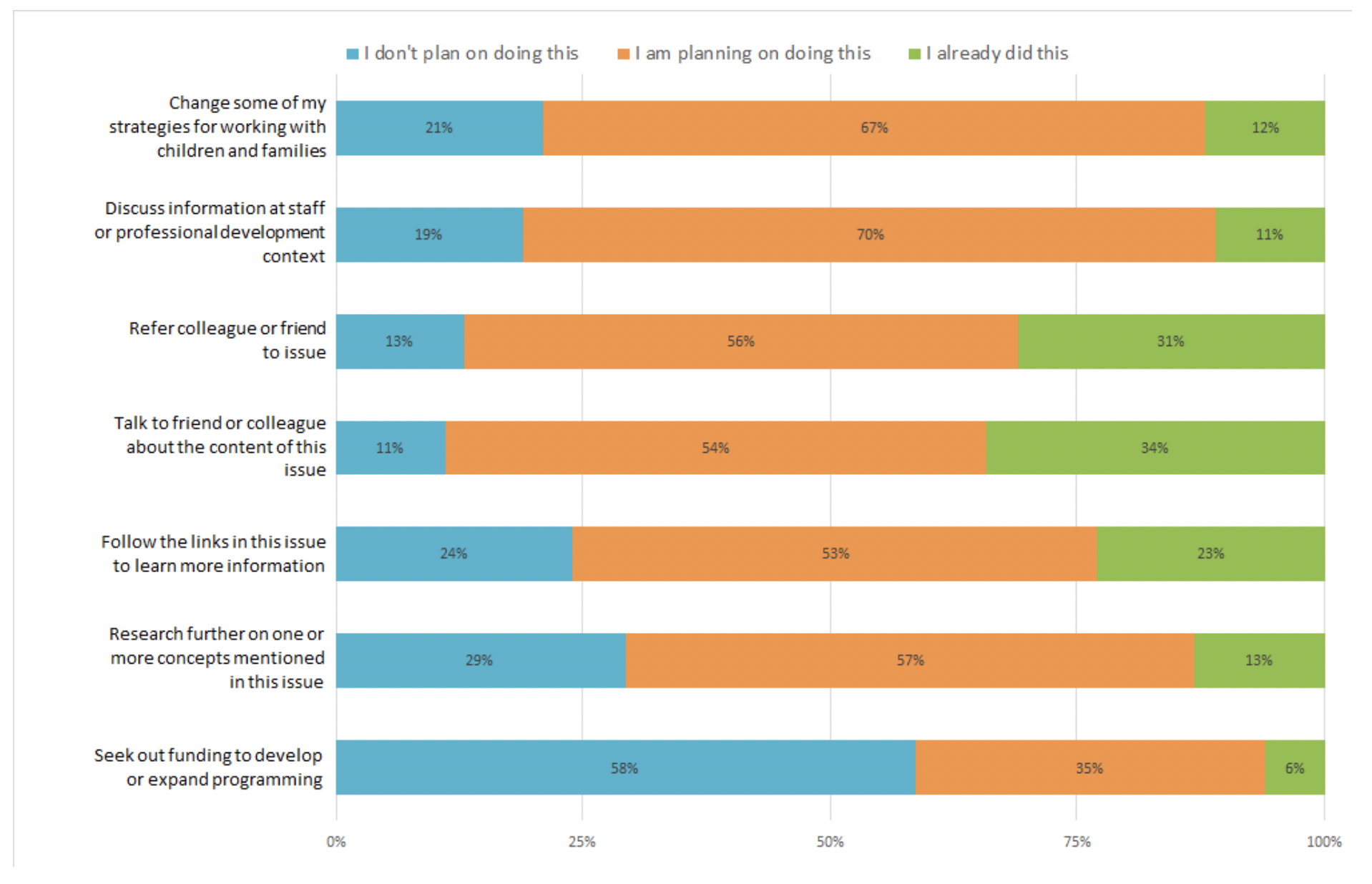 |
June 2020
|
June 2020 // Volume 58 // Number 3 // Ideas at Work // v58-3iw2
Publishing an Online Research Review: Engaging University and Community Authors in Communication About Research
Abstract
Extension professionals need easy access to published research and the means to translate it in meaningful ways. They also aim to engage community partners in applying research findings. The Children's Mental Health eReview serves as an example of a process for engaged writing with community partners as well as a product that summarizes current research and its relevance. The eReview reaches a wide audience, promotes practice change among readers, and serves as a useful model for other areas of Extension work.
Introduction
The need for Extension professionals to translate and apply research in order to create effective programming is well documented (Dunifon, Duttweiler, Pillemer, Tobias, & Trochim, 2004; Hamilton, Chen, Pillemer, & Meador, 2013; Perkins, Chilenski, Olson, Mincemoyer, & Spoth, 2014; Robinson, 2013). Extension educators have been described as science communicators (Robinson, 2013, "Extension Science Communicators"), disseminators (Dunifon et al., 2004, "Disseminators") and "a bridge between scholars and the wider community" (Hamilton et al., 2013, "Introduction"). Yet struggles remain regarding accessing timely research, summarizing it in a meaningful way, and applying it appropriately within various communities and cultures. Extension plays a critical role in understanding and translating the ever-growing body of evidence for public use. How can Extension professionals easily access and apply relevant research to their work? How can they make this evidence available to partners and constituents in culturally sensitive ways? The University of Minnesota Extension Children, Youth and Family Consortium (CYFC) has created a unique response to these questions through the Children's Mental Health eReview (also referred to herein as the eReview). This response has broad application across Extension. As an Extension educator within CYFC, I serve as creator and editor of and occasional author for the eReview.
Description
The eReview is an online publication that brings current, relevant research to Extension and community professionals through a thoughtfully planned and editorially rigorous production process. The scope of "children's mental health" is considered broadly in order to increase awareness about the wide range of societal issues affecting mental functioning. Topics are chosen by an advisory committee comprising Extension professionals and faculty members. Issues have addressed topics such as coparenting, parental incarceration, historical trauma, educational disparities, youth homelessness, and transgender youths.
Each eReview issue features a research section reflecting recently published research on the designated topic and an implications section outlining current use of that research in practice and policy. Advisors are faculty members and educators who prioritize topics, identify authors, and serve as content reviewers as needed. For each issue, a group of research and community authors are convened to carry out specific roles. Research authors are faculty members, graduate students, or Extension professionals who review recent and foundational peer-reviewed literature to introduce a topic, define and explain terminology, summarize basic and applied findings, and discuss significance. Topics typically reflect a research author's primary area of study. Community authors are seasoned practitioners who understand the research and have experience using it. They are chosen by research authors or advisors to review the research summary and write about the relevance of findings within diverse communities and contexts. They are asked to identify how the research applies to populations, cultures, and contexts of relevance to Extension (e.g., homeless youth, divorcing parents, Latinx students). Community authors offer practical methods for applying the research to change service delivery, train providers, inform policy, and/or educate the public. Specifically, community authors address whether particular uses of the research might be challenging or problematic and how these challenges might be met. This feedback loop is critical; research authors provide a summary of what is published on a given topic, and community authors guide future research toward greater relevance for Extension and within varied communities and cultures.
Production Process
The eReview production process is outlined in Figure 1. A collaborative procedure is implemented in publishing each issue.
Figure 1.
Issue Production

All published eReview issues are posted on the University of Minnesota Extension website at https://extension.umn.edu/mental-health/childrens-mental-health-ereviews.
Evaluation Results
The eReview publication has directly reached over 53,000 readers, with some individual issues reaching well over 5,000 readers (measured as readers who have viewed issues on or downloaded issues from the CYFC website or via the University of Minnesota Digital Conservancy website and training/course participants). Within a month following online posting and distribution to the CYFC list of approximately 3,000 community constituents, we distribute an online evaluation survey to those on that list regarding what readers learned, how they changed or planned to change practice as a result of the eReview, and overall quality.
In 2018, we conducted an analysis of survey responses related to five eReview issues (those published to date having more than 10 survey responses). We analyzed a total of 212 survey responses. Respondents were professionals in education, health and mental health, and social service fields and parents/advocates. Fifty-six percent were either educators or social workers, and almost half had over 15 years of work experience. Readers were asked to evaluate the eReview's value as a source of information and ways in which it promoted behavior change. Figure 2 reflects respondents' assessment of the eReview as a source of information. Ninety percent of respondents rated the eReview as a good or very good source of current research, signaling achievement of a primary goal of the publication. Seventy-nine percent rated it as a good or very good source of practice information, and 82% rated it as a good or very good source of policy information.
Figure 2.
The eReview as a Source of Information

Figure 3 reflects behavior change as a result of reading the eReview. Seventy-nine percent of respondents stated that they had already changed or planned on changing some of their strategies for working with children and families. In response to questions about sharing eReview content, 81% of respondents stated that they had already discussed or planned on discussing the eReview in a professional development setting, 87% responded that they had already referred or planned on referring a colleague or friend to the issue, and 88% responded that they had already talked with or planned on talking with a friend or colleague about eReview content. Reading the eReview also prompted readers to follow the links embedded in each issue or to seek related research on their own. Finally, many readers sought new programmatic funding or professional connections related to eReview topics, though prompting these actions is not a primary goal of eReview.
Figure 3.
Practice Change as a Result of the eReview

In addition to evaluating reader responses, the production process was evaluated for the purpose of determining the feasibility of expanding the eReview in other areas of Extension. A graduate student conducted one-on-one semistructured interviews with 13 research and community authors and asked about (a) their experience in the writing/editing process and (b) whether/how eReview authorship had benefited them. Authors identified many benefits of serving in the role, notably (a) synthesizing research in a useful way ("It must have taken some clever editing skill to synthesize the voices of different practitioners. I was really appreciative of that."), (b) writing for a community audience ("It was super helpful to learn how to write for practitioners, mostly because it's so different from what I do on a daily basis."), and (c) promoting a research topic of significance ("I think this eReview truly transformed and opened up the field for talking about parental incarceration").
All authors stated that they would recommend authorship to colleagues. Other benefits mentioned included opportunities to contribute something meaningful to the field, build support for their areas of work, and deepen their relationships with Extension.
Discussion and Implications
The Children's Mental Health eReview provides an accessible and relevant product and an effective engagement process for Extension. The role of the Extension professional continues to require translating research with the aim of changing behavior, and the eReview serves as a successful model for this task. Extension professionals can adjust subject matter to any topic, engage authors within that discipline, and use the eReview production process to quickly infuse new research into their program areas. Community professionals read the eReview and use its research data to change their working strategies. Authors gain valuable experience and, in some cases, develop long-term partnerships with Extension. By facilitating discussion with each author group as the eReview is developed, the Extension professional serves a central role in understanding and applying new knowledge. Extension is well suited for this role and benefits from the strong relationships that result.
References
Dunifon, R., Duttweiler, M., Pillemer, K., Tobias, D., & Trochim, W. M. K. (2004). Evidence-based Extension. Journal of Extension, 42(2), Article 2FEA2. Available at: https://www.joe.org/joe/2004april/a2.php
Hamilton, S. F., Chen, E. K., Pillemer, K., & Meador, R. H. (2013). Research use by Cooperative Extension educators in New York State. Journal of Extension, 51(3), Article v51-3a2. Available at: https://www.joe.org/joe/2013june/a2.php
Perkins, D. F., Chilenski, S. M., Olson, J. R., Mincemoyer, C. C., & Spoth, R. (2014). Knowledge, attitudes, and commitment concerning evidence-based prevention programs: Differences between family and consumer sciences and 4-H youth development educators. Journal of Extension, 52(3), Article v52-3a6. Available at: http://www.joe.org/joe/2014june/a6.php
Robinson, P. (2013). Effectively communicating science to Extension audiences. Journal of Extension, 51(2), Article v51-2iw1. Available at: https://www.joe.org/joe/2013april/iw1.php




